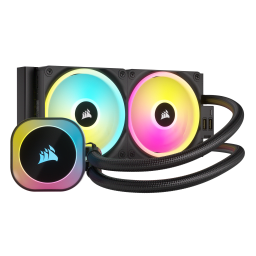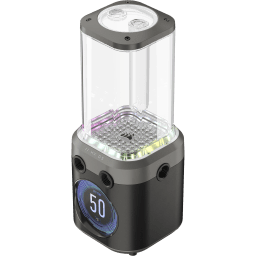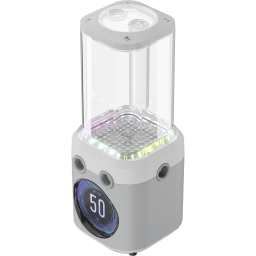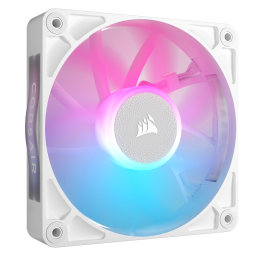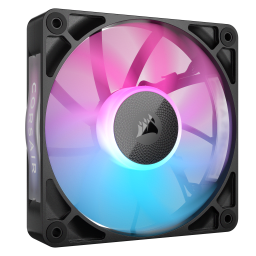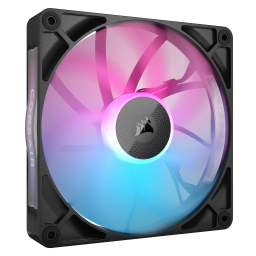BLOG
What is an AIO cooler? Do you actually need one?
AIOs, or All in One coolers have been around since the mid-2000s, and have been growing in popularity ever since. But why do so many people buy them? Perhaps it’s the aesthetic, or the performance? Or perhaps saying that your PC is “Water-cooled” makes your friends and family think you’re a computing wizard?
But do you actually need an AIO? Or does the humble tower cooler still suffice? Maybe there’s a better option? Let’s take a closer look.

Air cooler

AIO cooler

Custom cooling loop
What is an AIO cooler?
Simply put, an AIO cooler is a system that pumps liquid over your CPU to keep it cool. It’s fundamentally the same as the custom water cooling loops you see on the likes of r/battlestations, but you don’t have to put it together yourself.
It arrives fully built. And the actual concept is simplified. Notice how AIOs don’t have the reservoir that custom water cooling setups always have. This is because they are pre-filled at the factory. Additionally, they come with slightly longer tubes than are typically needed, so they can fit in a wider variety of cases.
So, that’s a pretty basic definition, but let’s break it down and talk about the individual components that make up an AIO.
The radiator
This is the gigantic black box that you mount the fans to. The liquid is pumped through the radiator, and the fans blow cold air through the radiator, thereby cooling the liquid. The trick here is surface area. The more surface area the radiator has, the more effective the fans are at cooling it. However, too much surface area and your risk making the radiator restrictive, which makes it difficult for the fans to actually get the air through it. Meaning that radiator design is a balancing act between these two variables.

Radiators are designed around the fans that are mounted on it, and on the case itself. This means that the size of AIO radiators is directly bound to these standards. Given that almost all PC cases are designed for 120mm and/or 140mm fans, this is our starting point. Most AIO radiators will be one of the following sizes:
- 120 x 120mm (1x 120mm fan)
- 240 x 120mm (2x 120mm fans)
- 360 x 120mm (3x 120mm fans)
- 140 x 140mm (1x 140mm fan)
- 280 x 140mm (2x 140mm fans)
- 420 x 140mm (3x 140mm fans)
- 560 x 140mm (4x 140mm fans)
Of course, that’s just the width and height. Thickness is important in determining surface area, too. Perhaps even more important, as even if your case could fit a certain sized radiator, it could be too thick and cause issues.
In practice, however, most AIO radiators are 30mm thick, with some going up to 40mm. Remember that fans need to be mounted to the radiator too, so there must be space available for those. Most cases are built to accept a combined radiator and fan thickness of 55-60mm in total.
The pump
The pump, unsurprisingly, is responsible for pushing the liquid through the entire system. It’s almost always integrated straight on top off the section of the AIO that clamps to the CPU.
The pump can speed up or slow down to increase or decrease flow speed of the liquid within the AIO. The faster the liquid flows, the more heat it takes away from the CPU. Most of the time this is controlled automatically, either by software, or directly off the CPU PWM header. The pump speed mostly works in tandem with the fans, too. If the fans speed up, so does the pump, and vice versa.

Though this isn’t a how to guide, it’s worth mentioning here that the pump functions best when it’s at the lowest point of the AIO setup. The pump is designed to pump liquid, so if air gets trapped in there, it can create noises ranging from slightly irritating to downright alarming. There will always be a little bit of air in the AIO as it’s basically impossible to totally remove it all.
Seeing as air is lighter than liquid, it will always rise to the highest point of the loop, so if you keep the pump at the bottom, it will remain free of air. We have an article all about AIO cooler orientation if you want a bit more detail here.
The cold plate
This is the part of the AIO that makes contact with the CPU, with a thin layer of thermal paste sandwiched in between. It’s typically made of a highly thermally conductive metal like copper or aluminum.

On the other side of the cold plate, there is often a bank of fins that the water flows through, creating a lot more surface area through which heat can escape. Much like the radiator, more surface area equates to more effective cooling here. Too much surface area, however, can impede the flow, so again, a balancing act between the two.
The tubes
This is most self-explanatory part. The tubes get the liquid over to the radiator, then back to the pump again. These need to be watertight (obviously). Less obviously, they need to be flexible enough to allow for different configurations, but if they’re too flexible, they could kink and slow down the flow of water.

The Liquid
There are a few options here, but the vast, vast majority use plain old water, generally spiked with a substance that prevents the growth of any untoward substances. If the liquid isn’t water, it’s likely to be a very thin coolant with similar thermal characteristics. So, that’s what an AIO is, and how it works. But do you need one?
Do I need an AIO?
"Need“ is a strong word. You absolutely need something to cool your CPU, but it doesn’t have to be an AIO. An AIO is just one type of solution for cooling a CPU. Most people would be totally fine using an old-fashioned air cooler, like the CORSAIR A115. However, those with very powerful CPUs might prefer an AIO, or other cooling solutions. Let’s see how AIOs stack up against other ways of keeping your CPU temps down.
AIO vs Air cooler
So, in terms of pure cooling potential, overall AIOs are more effective than air coolers and keeping your CPU cool. However, performance isn’t the only concern. You have noise, reliability, and the all-important aesthetics to consider.
Starting with noise, we must remember that like a tower cooler, AIOs still need fans to function. Tower coolers usually have two or three fans, as do AIOs, but they typically spin slower on an AIO to produce the same amount of cooling, so the AIO is usually quieter. Of course, you must remember that the AIO also contains a pump, which produces its own noise, but as long as the AIO is mounted correctly, pump noise should be undetectable.


Reliability is another matter entirely. Air coolers are basically big stacks of thin sheet metal with no moving parts (the necessary fans notwithstanding). Having no moving parts will always produce a more reliable design. Additionally, with no water, there is no risk of a leak, which is a possibility with an AIO, no matter how well-designed it is.
Then we have the subjective issue of aesthetics. While old-school purists might dig the monolithic look of the air cooler lump, other’s might prefer the sleek modern look of the AIO, with many AIOs these days, including our iCUE LINK AIOs, being upgradable with little LCD screens. These can be used to display useful info like coolant temps or fan speeds, or perhaps something a bit less useful, though arguably better anyway. Additionally, air coolers obfuscate the motherboard a lot more, making things like upgrading the RAM or reaching fan headers more of a pain.
AIO vs custom water cooling
Of course, there is another option, albeit one considerably more expensive and complex: building your own custom water-cooling loop. This is a somewhat advanced option to take, as you can definitely mess it up and even if you do it well, leaks are still more likely than with an AIO.


However, here we find the best possible performance, as you can run the cooling liquid through as many radiators as you can fit in your PC case. Remember, more radiators, means more surface area to dissipate heat. More heat dissipation, lower temperatures. Additionally, having more radiators mean that the fans don’t need to spin as fast,
Custom cooling also allows you to integrate other components into the loop. GPUs are the main one here, and the convenient location directly below the CPU makes for a nice, neat tubing run. You can also water cool m.2 SSDs and even some of the hotter parts of a motherboard, like the VRMs.

So, technically, custom watercooling is the best solution in terms of cooling and noise, but they can be tricky to plan and build, and will always be more expensive than air cooling or an AIO. (We actually make custom cooling kits that can make this easier. We also have a cooling configurator to help out.)
So, which CPU cooling solution is the best?
By now, you’ll probably have a good idea which is best for you. But to actually try to help out here, we’d say that a custom water cooling loop for a first-time builder is not the best idea. It’s difficult, fairly risky, and can eat up a lot of your budget that might be better spent on a faster CPU or more powerful GPU.
Air coolers and AIOs are basically equally easy to install. So, we’d recommend those for a first time builder. In fact, AIOs are perhaps a bit easier as you can continue to access the motherboard after clamping them down to the CPU.
Luckily for you, CORSAIR offers every type of CPU cooling solution, from air, to AIOs, to all the bit and pieces you need to build a custom water cooling loop. So, check out our webstore for all your cooling needs.
PRODUCTS IN ARTICLE

